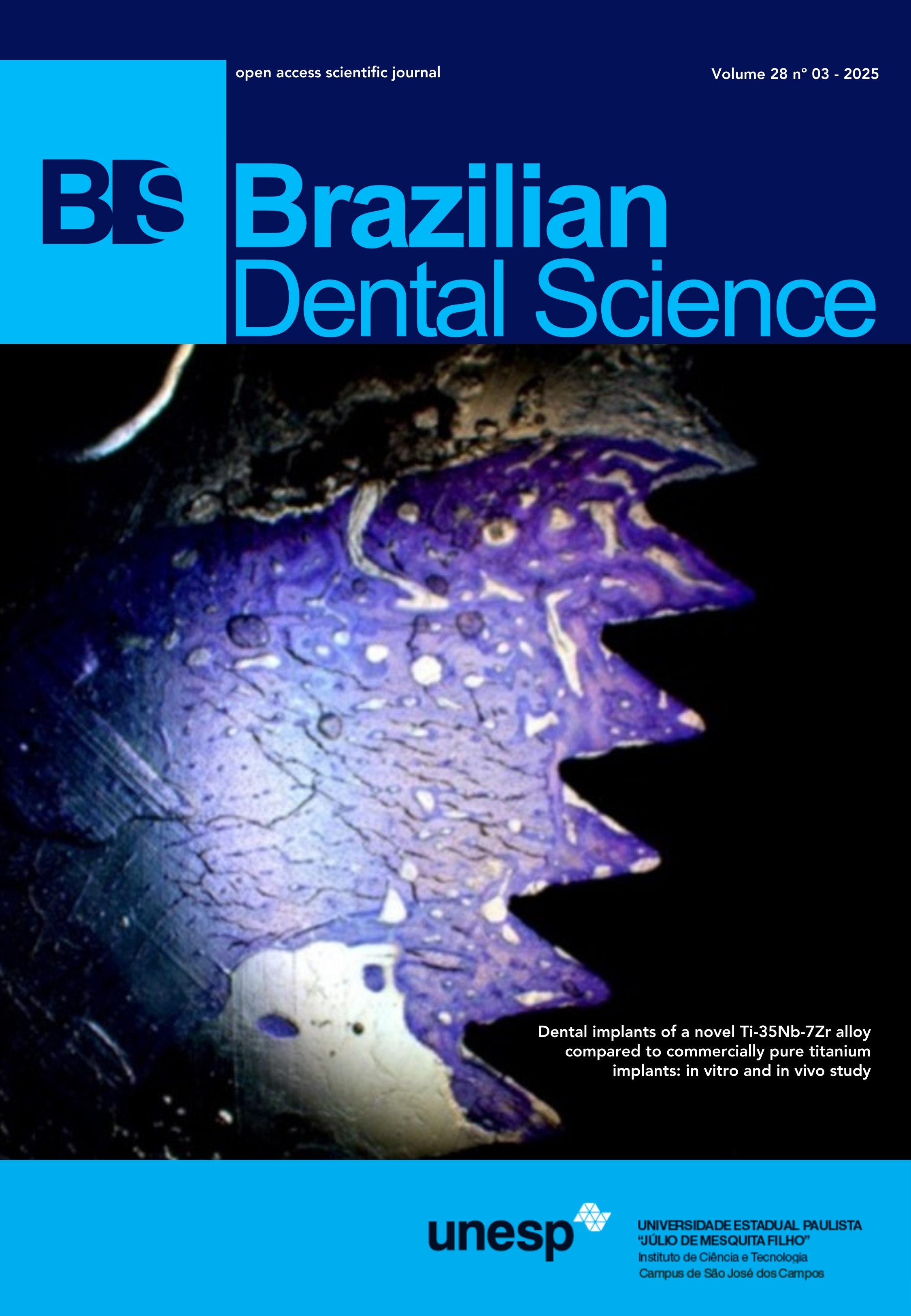Comparison of gap width of thermoformed clear aligners produced by different 3D printers
DOI:
https://doi.org/10.4322/bds.2025.e4696Abstract
Background: Although clear aligners have been widely used in orthodontics, factors such as thickness and fit are still little studied. In addition, other clinical aspects, such as optical properties, forces and moments and predictability of movement, are fundamental issues for the consolidation of this innovative therapeutic approach. This study aimed to assess how clear aligners manufacturing is impacted by 3D printer techniques and their thermoforming processes through analysis of the model-aligner interface. Methods: Models were printed on three different printers with distinct printing technologies, namely FDM (fused deposition material), SLA (stereolithography apparatus), and DLP (digital light processor). In each case, two resolutions were investigated (i.e. 25 µm and 100 µm). Polyethylene terephthalate glycol (PETG) sheets (Track A, ForestadentTM, Germany) were made using a thermoforming machine (Plastvac P7, Bio-Art, Brazil) to simulate the orthodontic clear aligner. A universal cutting machine (IsoMet 1000 Precision Cutter, Buehler, UK) was employed to obtain sections of the model-sheet set at the central incisor, canine, first premolar, and first molar regions in the lower arch. The GAP width between models and aligners was obtained through stereomicroscopy (Zeiss, Germany) and measured with Image J/Java software, version 1.46r. Statistical differences were obtained through Analysis of variance (ANOVA) and Tukey’s posthoc test at a significance level of 5%. Results: Gap differences were smaller for SLA and DLP when compared to FDM 3D printer technologies. It was observed that smaller resolutions (100 µm) displayed higher gap widths, relating precision to higher resolutions (25 µm). The assessment of the dental regions did not reveal any distinction relating to resolution or printer techniques. Conclusion: This study showed that SLA and DLP printers produced more precise models than FDM printers used in orthodontics for clear aligners. Factors such as cost, speed and printing capacity may be more important than resolution and GAP for the production of clear aligners in orthodontics.
Keywords: 3D printing; Biomechanics; Clear aligners; Digital orthodontics; Orthodontic appliances.
Downloads
Downloads
Published
How to Cite
Issue
Section
License
Copyright (c) 2025 Brazilian Dental Science

This work is licensed under a Creative Commons Attribution 4.0 International License.
Brazilian Dental Science uses the Creative Commons (CC-BY 4.0) license, thus preserving the integrity of articles in an open access environment. The journal allows the author to retain publishing rights without restrictions.
=================




























